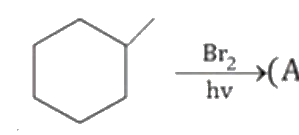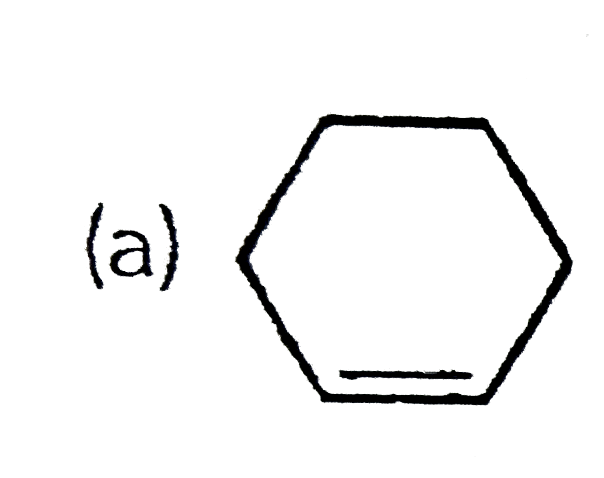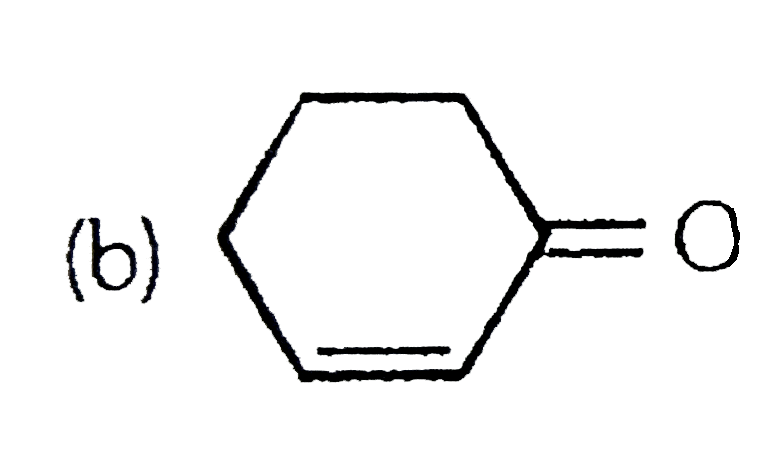Find out the compounds that will disproportionate in their aqueous solution.
(I)ClO−4overst(+0.36V)→ClO−3+0.33V−−−−→ClO2+0.66V−−−−→OCl−+0.40V−−−−→12Cl2+1.36−−−→Cl−
(II)MnO−4+0.56−−−→MnO2−4+2.22V−−−−→MnO2+0.95V−−−−→Mn3++1.55−−−→Mn2+(−0.19)V−−−−−−→Mn




The correct Answer is:A
To determine which compounds will disproportionate in their aqueous solution, we need to analyze the given half-reactions and their standard reduction potentials. Disproportionation occurs when a species can simultaneously be oxidized and reduced, which is indicated by the reduction potentials of the half-reactions.
1. Identify the Half-Reactions and Their Potentials:
- For the first set:
- ClO−4 to ClO−3 (E = +0.36 V)
- ClO−3 to ClO2 (E = +0.33 V)
- ClO2 to OCl− (E = +0.66 V)
- OCl− to 12Cl2 (E = +1.36 V)
- 12Cl2 to Cl− (E = +0.40 V)
- For the second set:
- MnO−4 to MnO2−4 (E = +0.56 V)
- MnO2−4 to MnO2 (E = +2.22 V)
- MnO2 to Mn3+ (E = +0.95 V)
- Mn3+ to Mn2+ (E = +1.55 V)
- Mn2+ to Mn (E = -0.19 V)
2. Check for Disproportionation:
- A species will disproportionate if the reduction potential of the product formed by reduction is greater than that of the reactant.
- For Chlorine Compounds:
- ClO2:
- Reduction potential from ClO2 to ClO3 is +0.33 V (left side).
- Reduction potential from ClO2 to OCl- is +0.66 V (right side).
- Since +0.66 V > +0.33 V, ClO2 will disproportionate.
- Cl2:
- Reduction potential from Cl2 to Cl- is +0.40 V (right side).
- Reduction potential from Cl2 to ClO4- is +1.36 V (left side).
- Since +1.36 V > +0.40 V, Cl2 will also disproportionate.
- For Manganese Compounds:
- MnO4^{2-}:
- Reduction potential from MnO4^{2-} to MnO4^{-} is +0.56 V (left side).
- Reduction potential from MnO4^{2-} to MnO2 is +2.22 V (right side).
- Since +2.22 V > +0.56 V, MnO4^{2-} will disproportionate.
- Mn^{3+}:
- Reduction potential from Mn^{3+} to Mn^{2+} is +1.55 V (right side).
- Reduction potential from Mn^{3+} to MnO2 is +0.95 V (left side).
- Since +1.55 V > +0.95 V, Mn^{3+} will also disproportionate.
3. Conclusion:
- The compounds that will disproportionate in their aqueous solution are:
- ClO2
- Cl2
- MnO4^{2-}
- Mn^{3+}
Final Answer:
The compounds that will disproportionate in their aqueous solution are ClO2, Cl2, MnO4^{2-}, and Mn^{3+}.
- For the first set:
- ClO−4 to ClO−3 (E = +0.36 V)
- ClO−3 to ClO2 (E = +0.33 V)
- ClO2 to OCl− (E = +0.66 V)
- OCl− to 12Cl2 (E = +1.36 V)
- 12Cl2 to Cl− (E = +0.40 V)
- MnO−4 to MnO2−4 (E = +0.56 V)
- MnO2−4 to MnO2 (E = +2.22 V)
- MnO2 to Mn3+ (E = +0.95 V)
- Mn3+ to Mn2+ (E = +1.55 V)
- Mn2+ to Mn (E = -0.19 V)
- A species will disproportionate if the reduction potential of the product formed by reduction is greater than that of the reactant.
- For Chlorine Compounds:
- ClO2:
- Reduction potential from ClO2 to ClO3 is +0.33 V (left side).
- Reduction potential from ClO2 to OCl- is +0.66 V (right side).
- Since +0.66 V > +0.33 V, ClO2 will disproportionate.
- Reduction potential from Cl2 to Cl- is +0.40 V (right side).
- Reduction potential from Cl2 to ClO4- is +1.36 V (left side).
- Since +1.36 V > +0.40 V, Cl2 will also disproportionate.
- MnO4^{2-}:
- Reduction potential from MnO4^{2-} to MnO4^{-} is +0.56 V (left side).
- Reduction potential from MnO4^{2-} to MnO2 is +2.22 V (right side).
- Since +2.22 V > +0.56 V, MnO4^{2-} will disproportionate.
- Reduction potential from Mn^{3+} to Mn^{2+} is +1.55 V (right side).
- Reduction potential from Mn^{3+} to MnO2 is +0.95 V (left side).
- Since +1.55 V > +0.95 V, Mn^{3+} will also disproportionate.
- The compounds that will disproportionate in their aqueous solution are:
- ClO2
- Cl2
- MnO4^{2-}
- Mn^{3+}
The compounds that will disproportionate in their aqueous solution are ClO2, Cl2, MnO4^{2-}, and Mn^{3+}.
Similar Questions
Knowledge Check
Using the following Latimer diagram for bromine,
pH=0,BrO−41.82V−−→BrO−31.50V−−→HBrO1.595V−−−→Br21.06552V−−−−→Br−
the species undergoing disproportionation isABrO−4BBrO−3CHBrODBr2
 Br2−−→hv(A)alc. KOH−−−−→(B)OsO4−−→(C)HlO4−−→(D), Identify 'D'
Br2−−→hv(A)alc. KOH−−−−→(B)OsO4−−→(C)HlO4−−→(D), Identify 'D'
View SolutionThe product D of the reaction CH3ClKCN−−→(A)H2O−−→(B)NH3−−→(C)Δ−−→(D) is
View SolutionCH3CH=CH2NBS−−→AKCN−−→BOH−/Δ−−−−−→CP/Br2−−−→DNH3−−→EΔ−−→F
View SolutionCH3CH2CH2OHPBr5−−→(A)KOH(Alc)−−−−−−→(B)HBr−−→(C)NH3−−→(D)
Identify the product
View SolutionF3C−CH=CH2HBr−−→(A)Nal−−−−−−−−−→dry.acetone(B)
View SolutionIdentify A to G in the following.
(a) Br2,CCl4−−−−−→AKCN−−→BH3O+−−−→C
Br2,CCl4−−−−−→AKCN−−→BH3O+−−−→C
(b) Br2,CCl4−−−−−→DKCN−−→EH3O+−−−→G
Br2,CCl4−−−−−→DKCN−−→EH3O+−−−→G
View SolutionACl2−−→BAgCN−−−→C[H]−−→(CH3)2 NH Reactant [ A ] is :
View Solution
